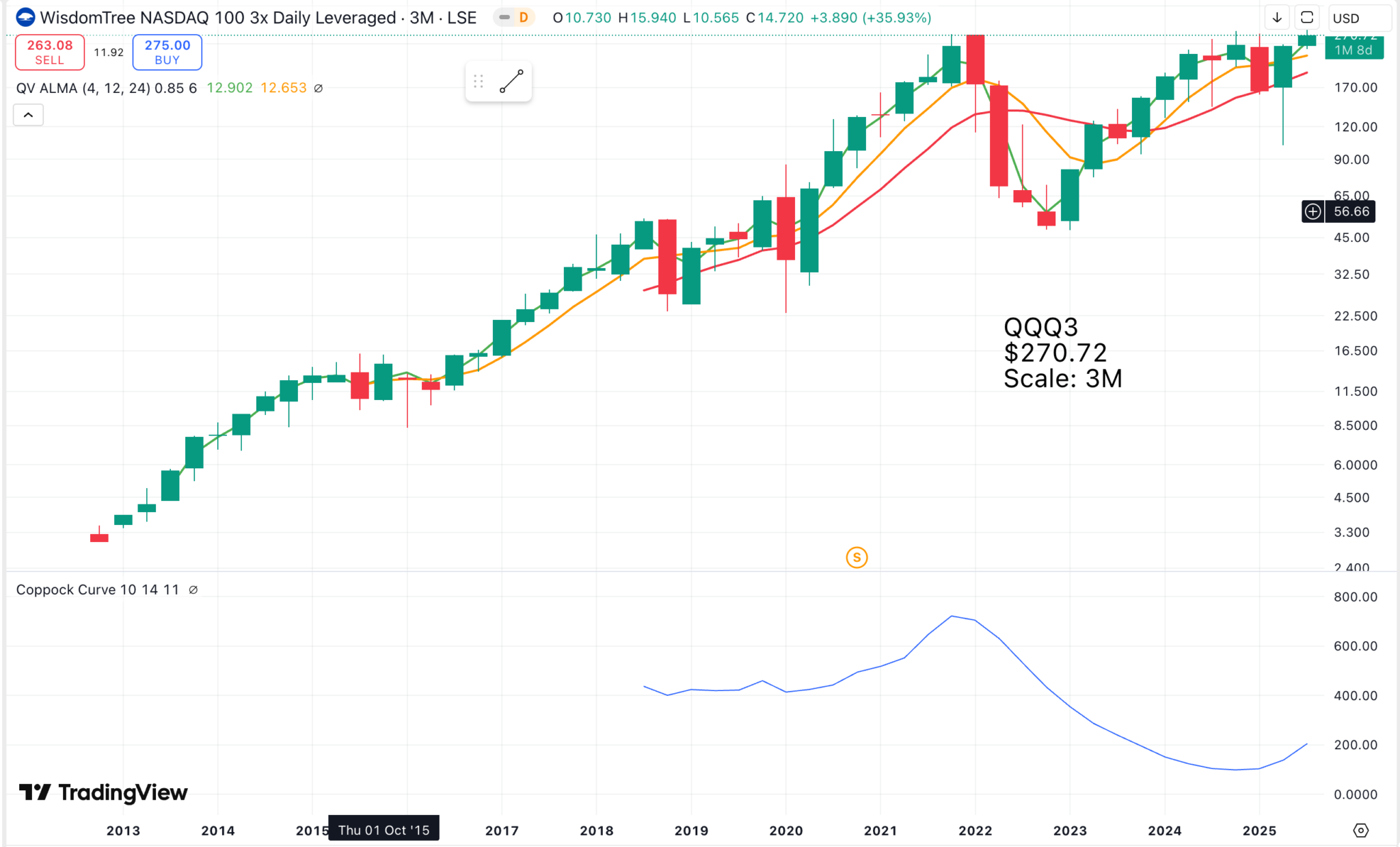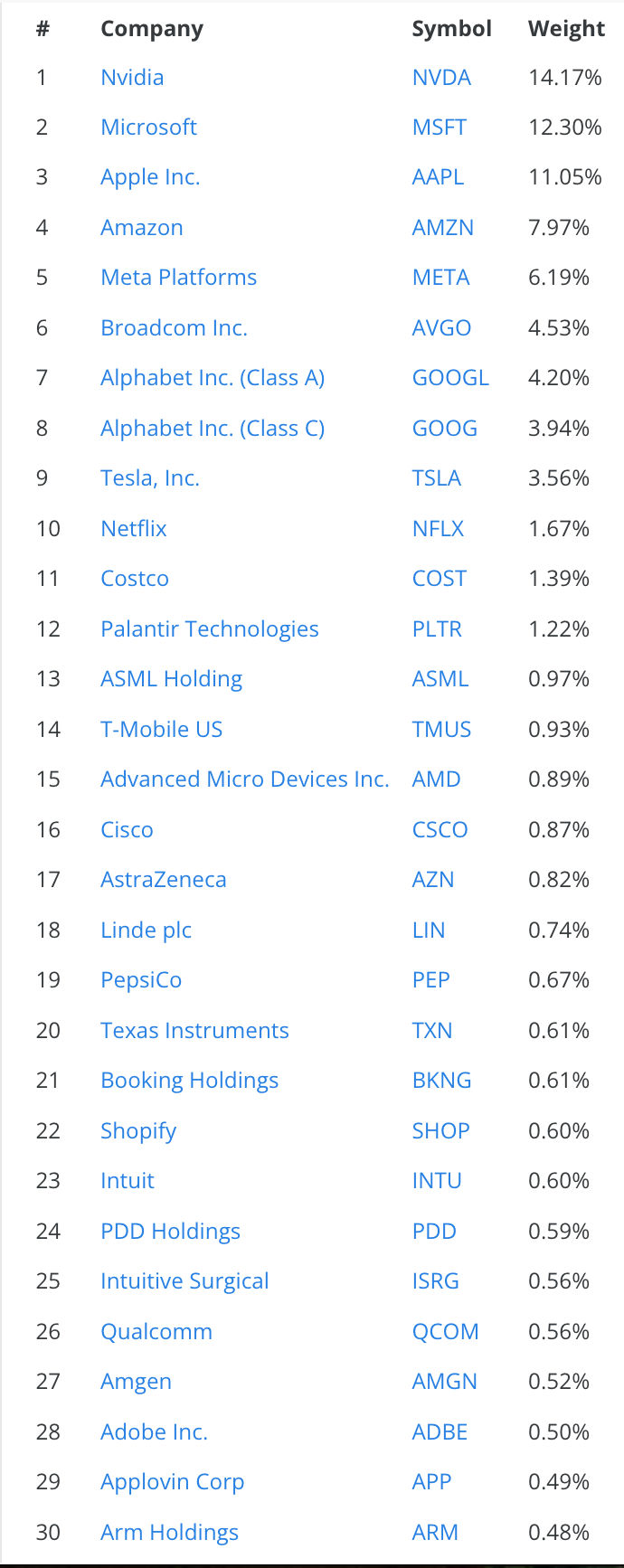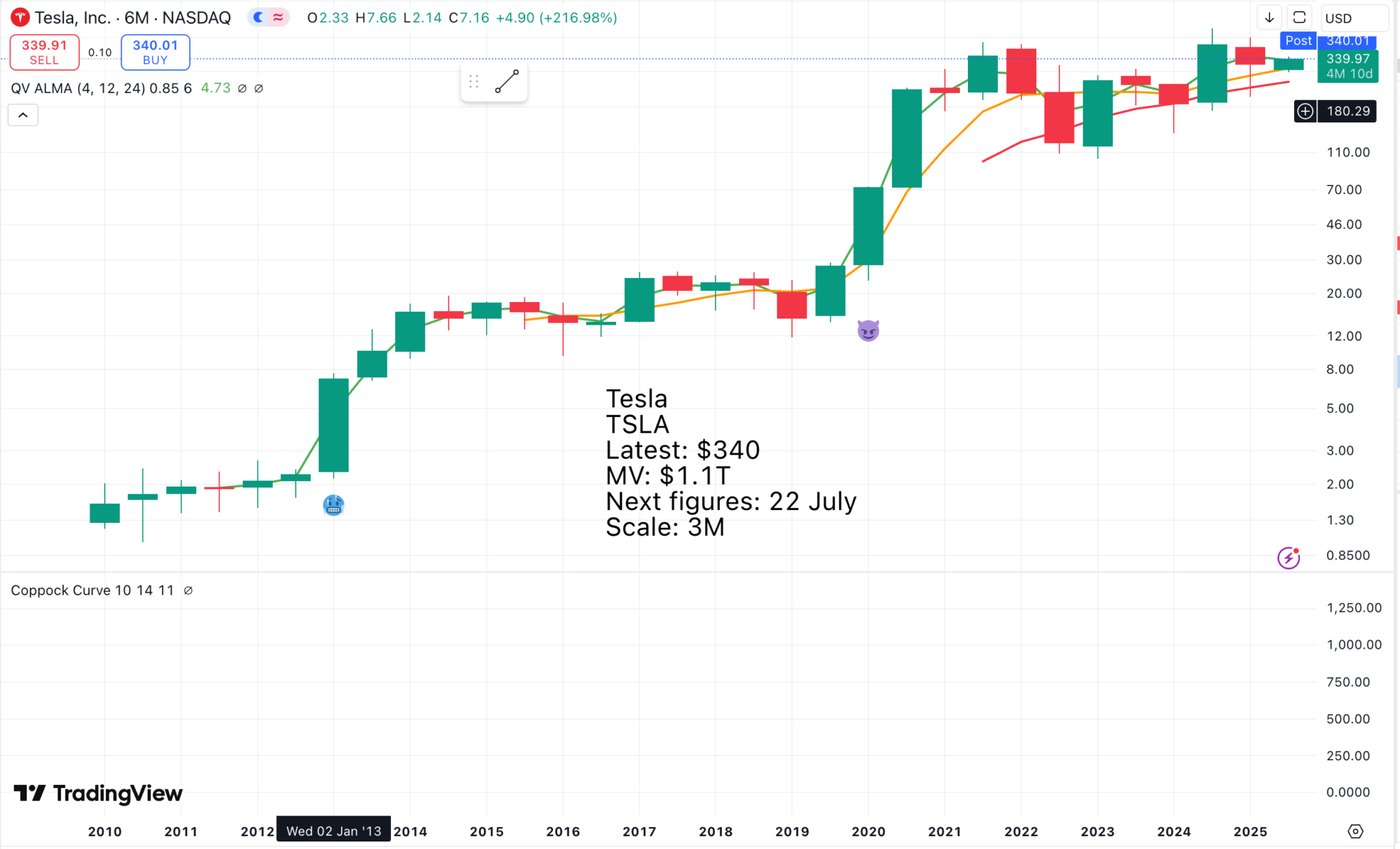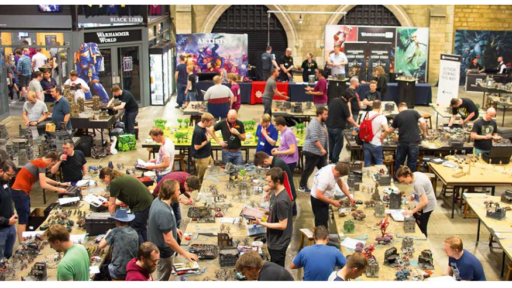

Something is happening which could be positive for QQQ3 as well as the stocks themselves. Mega-cap shares (in particular, the top 9 in the list below) are showing signs of moving higher. Since they account for a large proportion of the Nasdaq 100, which is loosely tracked by QQQ3, this could be the spur to push the ETF to a new all-time peak.
Mega-cap companies constitute a substantial, and increasing, proportion of the Nasdaq 100, with a recent analysis showing the largest 30 companies made up an average of 77% of the index’s aggregate weight between 2019 and 2024. In the past year, these top 30 companies contributed 98% of the index’s performance, highlighting their dominance.
AI Overview
Below are listed the top 30 companies in the Nasdaq 100.

Companies (8) valued at over $1 trillion make up nearly 68% of the index. If they start to move, the impact on the Nasdaq 100 and related ETFs, such as QQQ and QQQ3, is going to be seismic. One reason why they might is their massive spending on data centres, or what Jensen Huang of Nvidia calls AI factories.
It is mind-blowing what is happening.
Microsoft, Google, Amazon, and Meta are the main players investing at staggering levels to build and upgrade data centers that support the exponential demand for AI computing power, with those four companies alone forecasting a record $364 billion of capital investment in 2025. Combined, the so-called Magnificent Seven tech giants spent more than $100 billion on data center projects in just the past three months, as calculated by the Wall Street Journal’s Christopher Mims.
All this spending has to have an impact on the economy. Analyst estimates from Renaissance Macro Research indicate that so far in 2025, the dollar value contributed to GDP growth by AI data center expenditure surpassed the total impact from all U.S. consumer spending—the first time this has ever occurred.
Fortune Magazine, 6 August 2025
This is an epic development.
Several forces are driving this unprecedented investment wave. The boom in generative AI and advanced large language models—technologies that require vast amounts of computing resources—has forced tech giants to rapidly increase their physical infrastructure. Data from McKinsey projects that between 2025 and 2030, companies worldwide will need to invest a remarkable $6.7 trillion into new data center capacity to keep up with AI demand.
AI data center spending has grown at least 10-fold since 2022, with the well-known business blogger Paul Kedrosky estimating that it’s nearing 2% of total U.S. GDP by itself. “Honey, AI capex is eating the economy,” he writes, arguing that AI capex is so big that it’s “affecting economic statistics, boosting the economy, and beginning to approach the railroad boom.”
Apollo Global Management’s Torsten Slok, without wading into the data center capex question, has assembled research showing that the AI boom has surpassed the market value of the tech boom of the late ’90s, which became known as the “dotcom bubble” after speculative mania burst and a recession set in.
Kedrosky makes a similar point, contrasting capex booms from throughout financial history, notably the telecom boom of 2020 related to 5G/fiber technology and the railroad boom of the 19th century as the United States embraced a transportation revolution. “Capital expenditures on AI data centers is likely around 20% of the peak spending on railroads, as a percentage of GDP, and it is still rising quickly,” Kedrosky writes. “And we’ve already passed the decades-ago peak in telecom spending during the dotcom bubble.” Noah Smith, a widely read economics Substacker, asks the obvious question: “Will data centers crash the economy?”
This surge in tech investment has had profound downstream consequences. Without the AI data center building spree, GDP might have actually contracted in the face of uncertain macroeconomic conditions. So data center spending may have staved off—or postponed—a recession.
Money flooding into AI infrastructure is being diverted from other sectors, including venture capital, traditional manufacturing, and even consumer-facing startups. Unlike historical infrastructure booms such as those for railroads or telecom, AI data centers are short-lived, fast-depreciating, and require continuous hardware upgrades—suggesting this pattern of investment may remain volatile and capital-hungry for years to come.
As AI redefines industries, the flow of capital into the physical backbone of this technology—vast data centers—has upended old assumptions about what drives America’s economy. Consumer spending, though still immense in absolute terms, is not keeping up with the extraordinary scale and speed of investment by tech giants determined to lead in the AI era. The trajectory suggests that the U.S. economy in 2025 is being shaped not so much by the purchasing power of its people, but by the relentless arms race for AI compute capacity—an unprecedented, tech-led growth engine.
Fortune Magazine, 6 August 2025
The big question is whether this is good news or bad news. My take is that America is taking Planet Earth to somewhere unprecedented. The whole world is going digital plus, way beyond just the Internet. Goodness knows what that means, but it will involve an almost science fiction world of unmanned warfare, autonomous vehicles, smart factories, robots, space travel and much else besides.
An obvious question for the Mega Caps is whether they will see a return on their massive capital spending. Jensen Huang is convinced they will. He argues that AI factories consume vast, ever-growing quantities of data, process it with ever faster compute power and spew out tokens (intelligence or whatever you want to call it) which are worth much more than the cost of generating it.
On this analysis, the mega caps could be poised to make a fortune. Jesen Huang is talking his book since he sells the tools needed to make this data centre boom happen, but suppose he is right. He has been right about many things already.
One thing I find intriguing is that Tesla is not doing especially well on the car sales front, yet its shares are holding up well and look poised to move higher.

Investors seem convinced that Elon Musk is going to pull something out of a hat, some dramatic technological advance which will change perceptions of his company.
Here is a recent informative quote.
Elon’s pushing harder than ever. xAI is investing $40 billion at its Colossus site, powered by 208 Tesla megapacks with more on the way and a massive solar farm starting construction next month. Spy shots show big progress at Tesla’s Giga Texas Cortex 2, while AI leaders say they’d bet on Elon over OpenAI. He’s even pointing out how Spain alone could power Europe with solar and batteries
YouTube, BrighterWithHerbert, 20 August 2025
So what is Colossus?
“Colossus” refers to a cutting-edge AI supercomputer built by Elon Musk’s xAI startup, located in Memphis, Tennessee. It is one of the world’s largest AI training clusters, powered by a vast number of NVIDIA GPUs, and is designed to train xAI’s Grok AI model and other AI projects. The facility was constructed rapidly and utilizes advanced cooling systems, high-speed networks, and Tesla Megapack batteries for stability and power.
AI Overview
I have no idea where this is all going, but it suggests that Elon Musk has lost none of his appetite for making huge, high-risk bets. It turns out that Tesla does not own xAi, which belongs mainly (54-59%) to Elon Musk and which, in passing, has acquired X, formerly Twitter. Tesla benefits from supplying the solar packs powering Colossus and may well become more involved with xAi in the future if Tesla shareholders agree.
Musk is like some mad genius in a Bond movie. Where will it all end? It is hard to keep pace with what Musk is doing and what is happening out there, but the pace of change is both extraordinary and accelerating. It is an electrifying (to coin a phrase) background for investors.
Share Recommendations
QQQ3 (yet again)
Tesla TSLA
I am not adding Tesla to my Top 20 list (more than 20 shares if anyone is counting), but I am watching it



